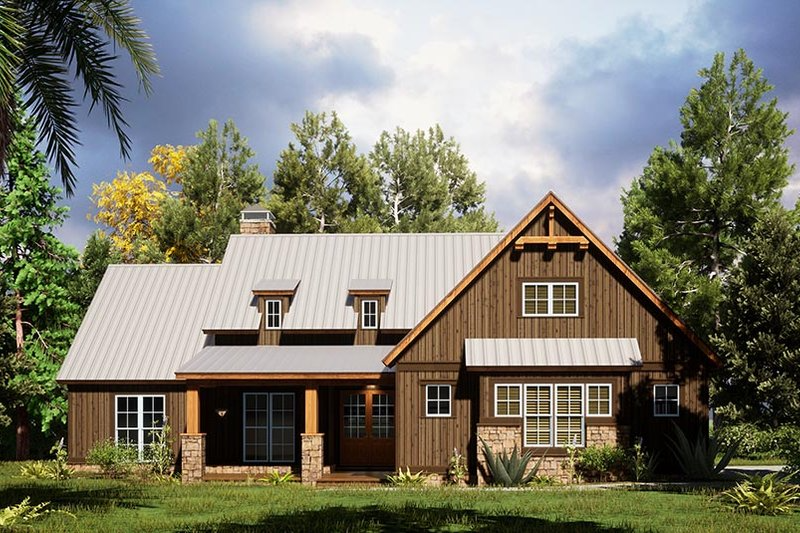How to Choose the Right Foundation for Your New House

Choosing the right foundation is one of the most critical decisions when building a new house.
The foundation serves as the base that supports the entire structure, ensuring stability and longevity.
The type of foundation you choose can affect not only the safety and durability of your home but also its overall cost, maintenance, and energy efficiency.
This article will explore different foundation types, key considerations in choosing the right one, and tips to help you make an informed decision.
Key Factors to Consider When Choosing a Foundation
When deciding on the best foundation for your new home, several factors need to be considered.
These factors influence the stability, cost, and functionality of the foundation. Here are some of the key aspects to keep in mind:
Soil Conditions
The condition of the soil on your building site is one of the most important factors in determining the type of foundation you need.
Different soil types—such as clay, sand, or loam—can affect how the foundation settles over time.
If the soil is unstable or prone to shifting, you may need a more robust foundation, such as a deep foundation or a slab foundation.
Climate and Weather Conditions
Weather patterns, particularly moisture levels and temperature fluctuations, can have a significant impact on the foundation.
In areas where freezing temperatures are common, you may need a frost-proof foundation to prevent the foundation from shifting due to freezing and thawing cycles.
Similarly, in regions with heavy rainfall or flood risks, the foundation must be designed to keep the home elevated and dry.
Budget Considerations
Your budget plays a significant role in foundation selection.
Some foundation types, like slab foundations, are more affordable and quicker to build, while others, like full basements, are more expensive due to the additional labor and materials required.
It's important to choose a foundation that fits within your overall budget while meeting your needs.
Building Code Requirements
Local building codes will dictate the type of foundation required for your area.
These codes are in place to ensure the safety of the structure and its inhabitants, so it’s important to consult with a structural engineer or contractor to ensure your foundation complies with local regulations.
Foundation Purpose and Usage
Think about the future needs of your home.
If you plan to use the space beneath your home for storage, living areas, or mechanical systems, you might want to choose a foundation that accommodates a full or partial basement.
Alternatively, if you don’t need the extra space, a slab foundation may suffice.
Types of Foundations for New Houses
There are several types of foundations commonly used in residential construction, each with its advantages and drawbacks.
Understanding the different options will help you make the best choice for your home.
1. Slab Foundation
A slab foundation is a flat, concrete base poured directly onto the ground.
It’s one of the simplest and most affordable types of foundations and is commonly used in warmer climates where the risk of frost heaving is minimal.
Advantages:
Cost-effective and quick to construct
Low maintenance and energy-efficient
Suitable for areas with stable soil
Disadvantages:
Limited space for plumbing and electrical systems (typically embedded in the slab)
Difficult to repair if cracks or damage occur
No basement or crawl space for additional storage
2. Crawl Space Foundation
A crawl space foundation elevates the house above the ground, creating a small space (usually 18-36 inches) beneath the home.
This foundation type is common in regions with high water tables or areas prone to flooding.
Advantages:
Provides easy access to plumbing and electrical systems
Allows for better ventilation, reducing moisture buildup
Useful in areas prone to flooding
Disadvantages:
Can be more expensive than a slab foundation
Requires regular maintenance to prevent mold and pests
May not be suitable for colder climates due to the potential for freezing in the crawl space
3. Basement Foundation
A basement foundation involves digging deep below the ground to create a full or partial living space.
This type of foundation is ideal for areas with a high water table or where extra space is needed for storage, living areas, or utilities.
Advantages:
Provides valuable extra living or storage space
Great for areas with moderate or high water tables
Can be finished into additional living space, increasing the home’s value
Disadvantages:
Expensive and time-consuming to construct
May require additional waterproofing measures to prevent flooding
Not ideal for areas prone to flooding or areas with high water tables
4. Pier and Beam Foundation
A pier and beam foundation consists of vertical piers (often made of concrete, wood, or steel) that support horizontal beams.
This foundation type is commonly used for homes in areas with expansive clay soils or where drainage is a concern.
Advantages:
Provides good ventilation beneath the home
Easy to access plumbing, electrical systems, and HVAC
Suitable for sloped sites
Disadvantages:
More expensive than a slab foundation
Requires periodic maintenance to ensure structural integrity
May not provide as much stability as a full concrete foundation
Choosing the Right Foundation for Your Home: A Step-by-Step Guide
Assess the Soil Conditions
Have a soil test conducted on your property to determine the type of soil and its stability.
This will help you decide whether you need a deep foundation (like a basement or pier foundation) or if a shallower foundation, like a slab, will suffice.
Consider Your Climate
Review the climate conditions in your area, including temperature fluctuations, moisture levels, and the likelihood of flooding.
For example, if you live in a cold region, you may need a frost-protected foundation.
Evaluate Your Budget
Determine how much you can afford to spend on your foundation.
While a slab foundation is the most budget-friendly, more complex foundations like basements or crawl spaces can add significant costs.
Think About Future Needs
Consider whether you plan to use the space below the house for additional living areas, storage, or mechanical systems.
If so, a foundation with a crawl space or basement will provide the necessary space.
Consult with Professionals
- Work with a structural engineer or contractor to ensure that your chosen foundation type is feasible given the soil conditions, climate, and local building codes. They will help you select the best option based on their expertise.
FAQ:
Q1: What type of foundation is best for a cold climate?
A frost-protected foundation or a deep foundation, such as a basement, is ideal for cold climates to prevent shifting due to freezing and thawing cycles.
Q2: What is the most cost-effective foundation type?
A slab foundation is typically the most affordable option, especially in warmer climates where frost heaving is not a concern.
Q3: Can I build a house without a foundation?
Technically, all homes require some form of foundation to support the structure. However, the type of foundation can vary based on the site conditions and local regulations.
Q4: What are the advantages of a basement foundation?
A basement provides extra storage or living space and is ideal for homes in areas with high water tables. It also increases the overall value of the property.
Q5: Can a crawl space foundation prevent flooding?
Yes, a crawl space foundation can help reduce the risk of flooding by elevating the house above the ground level. However, it’s essential to ensure proper drainage to prevent moisture accumulation.
Conclusion
Choosing the right foundation for your new house is a crucial decision that will impact the overall durability, cost, and functionality of your home.
By considering factors such as soil conditions, climate, budget, and future needs, you can make an informed choice about which foundation type best suits your home.
Whether you opt for a simple slab foundation or a more complex basement, understanding your options and working with professionals will ensure that your new home is built on a solid foundation.




